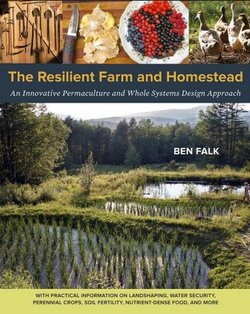 Ben Falk's book is a must for cold climate Permaculture designers, homesteader's and anyone keen to learn from insightful and experienced holistic decision making. We thoroughly enjoyed the read, and most importantly from our perspective; it's a work based on raw experience, dedication and enthusiasm. Permaculture design is learnt by doing; we need more practitioners out on the ground working professionally & implementing resilient and effective solutions restoring ecosystems, connecting people to bring about robust local economies & exchange systems and meeting our human needs holistically. This book supports those objectives, written in a refreshing tone that sets aside theory from observed practice. Ben has a diverse and deep design experience, and we are very excited to have him join us this spring for the first PDC at the farm as a guest lecturer via conference call.
0 Comments
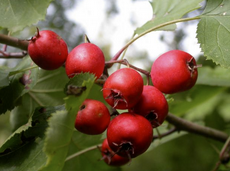 Crataegus ellwangeriana, hawthorn Crataegus ellwangeriana, hawthorn We can think of at least 180 great forest garden & perennial crops for cold climate Sweden. Want to hear about them? Over the course of the next year we will profile 5 a week on the blog. Perennial plants and crops offer a low energy, oil & resource input based foundation for future-proof agricultures. By default if an agriculture is to be called regenerative the bottom line is that it must be soil building, not soil depleting. Relentless deep tillage & poor soil husbandry (wifery?!) contributes to the majority of the 24 billion tons of topsoil lost every year on planet water. We are going to be focused on holistic polyculture grazing and perennial production at ridgedale over most of the site as this represents the most effective way to restore our degraded landscape, produce high value produce and ensure the future resource base we are managing holistically for in our decision making. 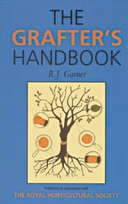 R.J Garners "The Grafters Handbook" has long considered the bible for professional horticulturists and hobbyists alike, and offers a comprehensive grafting course, accompanied by line drawings and photographs that provide a vivid visual reference. Topics include using rootstocks from seed and cuttings, identifying viruses, and grafting established trees. It's an awesome book and with grafting season approaching we thought this would be a great way to celebrate moving to the farm. If you want a copy just post a comment of how it would benefit you and we'll pick out a lucky winner at the end oof the week and zip you a copy....  What will you do with this? What will you do with this? Wanting to take a Permaculture Design Course (PDC)? Wondering what you get out of taking a course like this & how they differ around the world? There are regular courses all over the world now and because Permaculture is decentralized there is a great variance in different courses, which we have observed on our travels working & teaching around the world. We've compiled a list of 10 reasons why taking a training with us represents a good investment in both your own learning pathway and offers points well worth reflecting upon generally if you are considering taking a similar training... 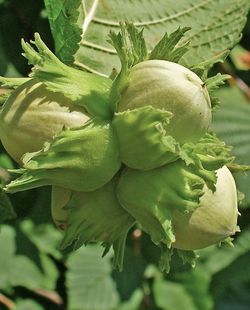 Corylus spp. (here avellana), hazel Corylus spp. (here avellana), hazel We can think of at least 180 great forest garden & perennial crops for cold climate Sweden. Want to hear about them? Over the course of the next year we will profile 5 a week on the blog. Perennial plants and crops offer a low energy, oil & resource input based foundation for future-proof agricultures. By default if an agriculture is to be called regenerative the bottom line is that it must be soil building, not soil depleting. Relentless deep tillage & poor soil husbandry (wifery?!) contributes to the majority of the 24 billion tons of topsoil lost every year on planet water. We are going to be focused on holistic polyculture grazing and perennial production at ridgedale over most of the site as this represents the most effective way to restore our degraded landscape, produce high value produce and ensure the future resource base we are managing holistically for in our decision making. 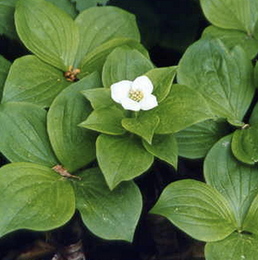 Cornus canadensis, bunchberry shrub Cornus canadensis, bunchberry shrub We can think of at least 180 great forest garden & perennial crops for cold climate Sweden. Want to hear about them? Over the course of the next year we will profile 5 a week on the blog. Perennial plants and crops offer a low energy, oil & resource input based foundation for future-proof agricultures. By default if an agriculture is to be called regenerative the bottom line is that it must be soil building, not soil depleting. Relentless deep tillage & poor soil husbandry (wifery?!) contributes to the majority of the 24 billion tons of topsoil lost every year on planet water. We are going to be focused on holistic polyculture grazing and perennial production at ridgedale over most of the site as this represents the most effective way to restore our degraded landscape, produce high value produce and ensure the future resource base we are managing holistically for in our decision making. 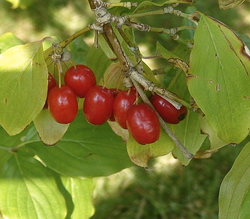 Cornus mas, cornelian cherry Cornus mas, cornelian cherry We can think of at least 180 great forest garden & perennial crops for cold climate Sweden. Want to hear about them? Over the course of the next year we will profile 5 a week on the blog. Perennial plants and crops offer a low energy, oil & resource input based foundation for future-proof agricultures. By default if an agriculture is to be called regenerative the bottom line is that it must be soil building, not soil depleting. Relentless deep tillage & poor soil husbandry (wifery?!) contributes to the majority of the 24 billion tons of topsoil lost every year on planet water. We are going to be focused on holistic polyculture grazing and perennial production at ridgedale over most of the site as this represents the most effective way to restore our degraded landscape, produce high value produce and ensure the future resource base we are managing holistically for in our decision making. 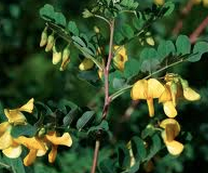 Colutea arborescens, bladder senna Colutea arborescens, bladder senna We can think of at least 180 great forest garden & perennial crops for cold climate Sweden. Want to hear about them? Over the course of the next year we will profile 5 a week on the blog. Perennial plants and crops offer a low energy, oil & resource input based foundation for future-proof agricultures. By default if an agriculture is to be called regenerative the bottom line is that it must be soil building, not soil depleting. Relentless deep tillage & poor soil husbandry (wifery?!) contributes to the majority of the 24 billion tons of topsoil lost every year on planet water. We are going to be focused on holistic polyculture grazing and perennial production at ridgedale over most of the site as this represents the most effective way to restore our degraded landscape, produce high value produce and ensure the future resource base we are managing holistically for in our decision making.  Cichorium intybus, chicory Cichorium intybus, chicory We can think of at least 180 great forest garden & perennial crops for cold climate Sweden. Want to hear about them? Over the course of the next year we will profile 5 a week on the blog. Perennial plants and crops offer a low energy, oil & resource input based foundation for future-proof agricultures. By default if an agriculture is to be called regenerative the bottom line is that it must be soil building, not soil depleting. Relentless deep tillage & poor soil husbandry (wifery?!) contributes to the majority of the 24 billion tons of topsoil lost every year on planet water. We are going to be focused on holistic polyculture grazing and perennial production at ridgedale over most of the site as this represents the most effective way to restore our degraded landscape, produce high value produce and ensure the future resource base we are managing holistically for in our decision making. 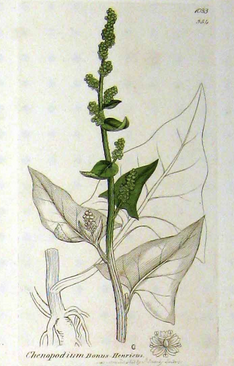 Chenopodium bonus-henricus, Good King Henry Chenopodium bonus-henricus, Good King Henry We can think of at least 180 great forest garden & perennial crops for cold climate Sweden. Want to hear about them? Over the course of the next year we will profile 5 a week on the blog. Perennial plants and crops offer a low energy, oil & resource input based foundation for future-proof agricultures. By default if an agriculture is to be called regenerative the bottom line is that it must be soil building, not soil depleting. Relentless deep tillage & poor soil husbandry (wifery?!) contributes to the majority of the 24 billion tons of topsoil lost every year on planet water. We are going to be focused on holistic polyculture grazing and perennial production at ridgedale over most of the site as this represents the most effective way to restore our degraded landscape, produce high value produce and ensure the future resource base we are managing holistically for in our decision making.  Re-use your stale bread... Re-use your stale bread... I just arrived in Belarus to give a seminar on Regenerative Agriculture, and settled into a traditional fermented beverage, Kvass. Most of our "gourmet" foods are ferments of one kind of another, and inclusion of diverse ferments in the diet is shown repeatedly around the world for it's wide ranging health benefits. Indeed every culture on the planet utilizes Lacto- ferments of one kind or another. Coming from a generation with a profusely weird understanding of microbiology I would encourage anyone to learn about fermented foods. Perhaps the most approachable book on the subject is by Sandor Katz who I had the pleasure to meet at the incredible Possibility Alliance in Missouri a few years back. (This book covers all kinds of delicious nutritious goodies) Kvass has been a common drink in Eastern Europe since ancient times, comparable with other ancient fermented grain beverages including beer brewed from barley by the ancient Egyptians, the millet beer of Africa, the so-called rice wines of Asia, the chicha made with corn or cassava by the native Americans. 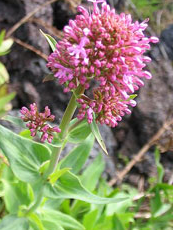 Centranthus ruber, red valerian Centranthus ruber, red valerian We can think of at least 180 great forest garden & perennial crops for cold climate Sweden. Want to hear about them? Over the course of the next year we will profile 5 a week on the blog. Perennial plants and crops offer a low energy, oil & resource input based foundation for future-proof agricultures. By default if an agriculture is to be called regenerative the bottom line is that it must be soil building, not soil depleting. Relentless deep tillage & poor soil husbandry (wifery?!) contributes to the majority of the 24 billion tons of topsoil lost every year on planet water. We are going to be focused on holistic polyculture grazing and perennial production at ridgedale over most of the site as this represents the most effective way to restore our degraded landscape, produce high value produce and ensure the future resource base we are managing holistically for in our decision making. 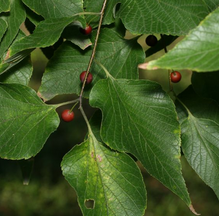 Celtis occidentalis, hackberry Celtis occidentalis, hackberry We can think of at least 180 great forest garden & perennial crops for cold climate Sweden. Want to hear about them? Over the course of the next year we will profile 5 a week on the blog. Perennial plants and crops offer a low energy, oil & resource input based foundation for future-proof agricultures. By default if an agriculture is to be called regenerative the bottom line is that it must be soil building, not soil depleting. Relentless deep tillage & poor soil husbandry (wifery?!) contributes to the majority of the 24 billion tons of topsoil lost every year on planet water. We are going to be focused on holistic polyculture grazing and perennial production at ridgedale over most of the site as this represents the most effective way to restore our degraded landscape, produce high value produce and ensure the future resource base we are managing holistically for in our decision making.  Cedrella sinensis, Fragrant spring tree Cedrella sinensis, Fragrant spring tree We can think of at least 180 great forest garden & perennial crops for cold climate Sweden. Want to hear about them? Over the course of the next year we will profile 5 a week on the blog. Perennial plants and crops offer a low energy, oil & resource input based foundation for future-proof agricultures. By default if an agriculture is to be called regenerative the bottom line is that it must be soil building, not soil depleting. Relentless deep tillage & poor soil husbandry (wifery?!) contributes to the majority of the 24 billion tons of topsoil lost every year on planet water. We are going to be focused on holistic polyculture grazing and perennial production at ridgedale over most of the site as this represents the most effective way to restore our degraded landscape, produce high value produce and ensure the future resource base we are managing holistically for in our decision making.  Caragana arborescens, Siberian Pea Shrub Caragana arborescens, Siberian Pea Shrub We can think of at least 180 great forest garden & perennial crops for cold climate Sweden. Want to hear about them? Over the course of the next year we will profile 5 a week on the blog. Perennial plants and crops offer a low energy, oil & resource input based foundation for future-proof agricultures. By default if an agriculture is to be called regenerative the bottom line is that it must be soil building, not soil depleting. Relentless deep tillage & poor soil husbandry (wifery?!) contributes to the majority of the 24 billion tons of topsoil lost every year on planet water. We are going to be focused on holistic polyculture grazing and perennial production at ridgedale over most of the site as this represents the most effective way to restore our degraded landscape, produce high value produce and ensure the future resource base we are managing holistically for in our decision making.  Camassia quamash, Quamash Camassia quamash, Quamash We can think of at least 180 great forest garden & perennial crops for cold climate Sweden. Want to hear about them? Over the course of the next year we will profile 5 a week on the blog. Perennial plants and crops offer a low energy, oil & resource input based foundation for future-proof agricultures. By default if an agriculture is to be called regenerative the bottom line is that it must be soil building, not soil depleting. Relentless deep tillage & poor soil husbandry (wifery?!) contributes to the majority of the 24 billion tons of topsoil lost every year on planet water. We are going to be focused on holistic polyculture grazing and perennial production at ridgedale over most of the site as this represents the most effective way to restore our degraded landscape, produce high value produce and ensure the future resource base we are managing holistically for in our decision making. 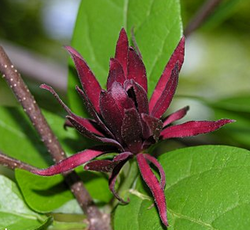 Calycanthus floridus, Carolina allspice Calycanthus floridus, Carolina allspice We can think of at least 180 great forest garden & perennial crops for cold climate Sweden. Want to hear about them? Over the course of the next year we will profile 5 a week on the blog. Perennial plants and crops offer a low energy, oil & resource input based foundation for future-proof agricultures. By default if an agriculture is to be called regenerative the bottom line is that it must be soil building, not soil depleting. Relentless deep tillage & poor soil husbandry (wifery?!) contributes to the majority of the 24 billion tons of topsoil lost every year on planet water. We are going to be focused on holistic polyculture grazing and perennial production at ridgedale over most of the site as this represents the most effective way to restore our degraded landscape, produce high value produce and ensure the future resource base we are managing holistically for in our decision making. 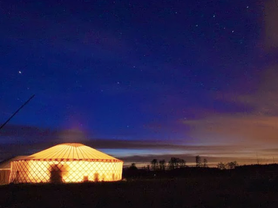 One of the two 9m (30ft) Gers I made last year One of the two 9m (30ft) Gers I made last year Having built over a dozen Ger's (yurts with straight roof poles) I have used various resources in the past, starting in the beginning with my first Ger through simple observation and visualization. Over time I started using other people's templates, and by far the best resource I have come across is the website linked below. Great for low impact living, training spaces, parties, etc, these low cost portable structures are simple to make with basic sewing and carpentry skills, and can even be made snow proof for up to 1m of snow in line with engineering codes.  Bunias orientalis, Turkish Rocket Bunias orientalis, Turkish Rocket We can think of at least 180 great forest garden & perennial crops for cold climate Sweden. Want to hear about them? Over the course of the next year we will profile 5 a week on the blog. Perennial plants and crops offer a low energy, oil & resource input based foundation for future-proof agricultures. By default if an agriculture is to be called regenerative the bottom line is that it must be soil building, not soil depleting. Relentless deep tillage & poor soil husbandry (wifery?!) contributes to the majority of the 24 billion tons of topsoil lost every year on planet water. We are going to be focused on holistic polyculture grazing and perennial production at ridgedale over most of the site as this represents the most effective way to restore our degraded landscape, produce high value produce and ensure the future resource base we are managing holistically for in our decision making. 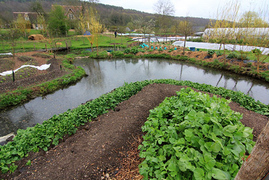 I just came across this photo from a trip around Europe a couple of years ago. Charles and Perrine Herve- Gruyer run the beautiful and productive Bec Hellouin, where they have been engaged since late 2011 in a research program in partnership with INRA and AgroParisTech. I am posting this short interview and old article I wrote as I feel like it is still a pertinant point, a farm worth checking out and makes me feel excited for the detailed & thorough documentation work we will be conducting at ridgedale. In the spring of 2005, acclaimed environmental photographer James Balog headed to the Arctic on an assignment for National Geographic to capture images to help tell the story of the Earth’s changing climate. Using modified solar powered time-lapse cameras mounted in precarious positions the film compresses years into seconds and captures ancient mountains of ice in motion as they disappear at a breathtaking rate. It's an awesome piece of work we would highly recommend. Trailer below highlights the largest calving event ever filmed- lasting for 75 minutes and the glacier retreated a 1.7km across a calving face nearly 5km wide. The height of the ice is about 900m, 90- 120 m above water and the rest below water. http://www.chasingice.com/ 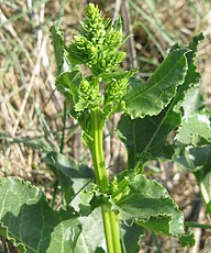 Beta vulgaris maritima, sea beet Beta vulgaris maritima, sea beet We can think of at least 180 great forest garden & perennial crops for cold climate Sweden. Want to hear about them? Over the course of the next year we will profile 5 a week on the blog. Perennial plants and crops offer a low energy, oil & resource input based foundation for future-proof agricultures. By default if an agriculture is to be called regenerative the bottom line is that it must be soil building, not soil depleting. Relentless deep tillage & poor soil husbandry (wifery?!) contributes to the majority of the 24 billion tons of topsoil lost every year on planet water. We are going to be focused on holistic polyculture grazing and perennial production at ridgedale over most of the site as this represents the most effective way to restore our degraded landscape, produce high value produce and ensure the future resource base we are managing holistically for in our decision making.  Not feeling so connected to current affairs at the moment, but aware that Fukushima issue is kinda global, long term and simultaneously played down/ inflated by "opposing" sources, thanks Ben Falk for sharing this information source; http://www.fukuleaks.org/web/?p=11990 Leading mycologist Paul Stamets developed an 8 step plan and this petition may be worth signing. I don't have a clue if this would work, but I reckon natures got the biggest handle.... Step 6 involves inoculating hyper-accumulating mycorrhizal mushrooms into native deciduous/conifer plantings, particularly Gomphidius glutinosus, Craterellus tubaeformis, and Laccaria amethystina (all native to pines). G. glutinosus has been reported to absorb (via the mycelium) and concentrate radioactive Cesium 137 more than 10,000 fold over ambient background levels. Many other mycorrhizal mushroom species also hyper-accumulate. http://petitions.moveon.org/sign/implement-paul-stamets.fb55?source=s.fb&r_by=8913889  Perfect saws for finer carpentry work The Japanese saw or nokogiri (鋸?) is a type of saw used in woodworking and Japanese carpentry that cuts on the pull stroke, unlike the European saw that cuts on the push stroke. This allows it to have thinner blades that cut more efficiently and leave a narrower cut width (kerf). On the other hand, a pull stroke does not easily permit putting one's body weight behind a stroke. The Ryōba (両刃) pictured is a multi-purpose carpentry saw with two cutting edges. The Japanese means "double blade". There is a cross-cutting (yokobiki) blade on one side and a ripping (tatebiki) blade on the other. My 3 yr old daughter Grace liked this video and said, "Dad, why don't we have one of them chain things when we chop our wood?" So for todays craft time we found all the pieces we needed and now we do. Super easy & quick to make with things lying around, 2m of chain, a rubber "spring", 3 keyring loops and some kind of hook; |
Details
Like us on FB Below for regular updatesStay up to date with customized updates you want to receive
Upcoming coursesArchives
December 2016
Categories
All
|

 RSS Feed
RSS Feed